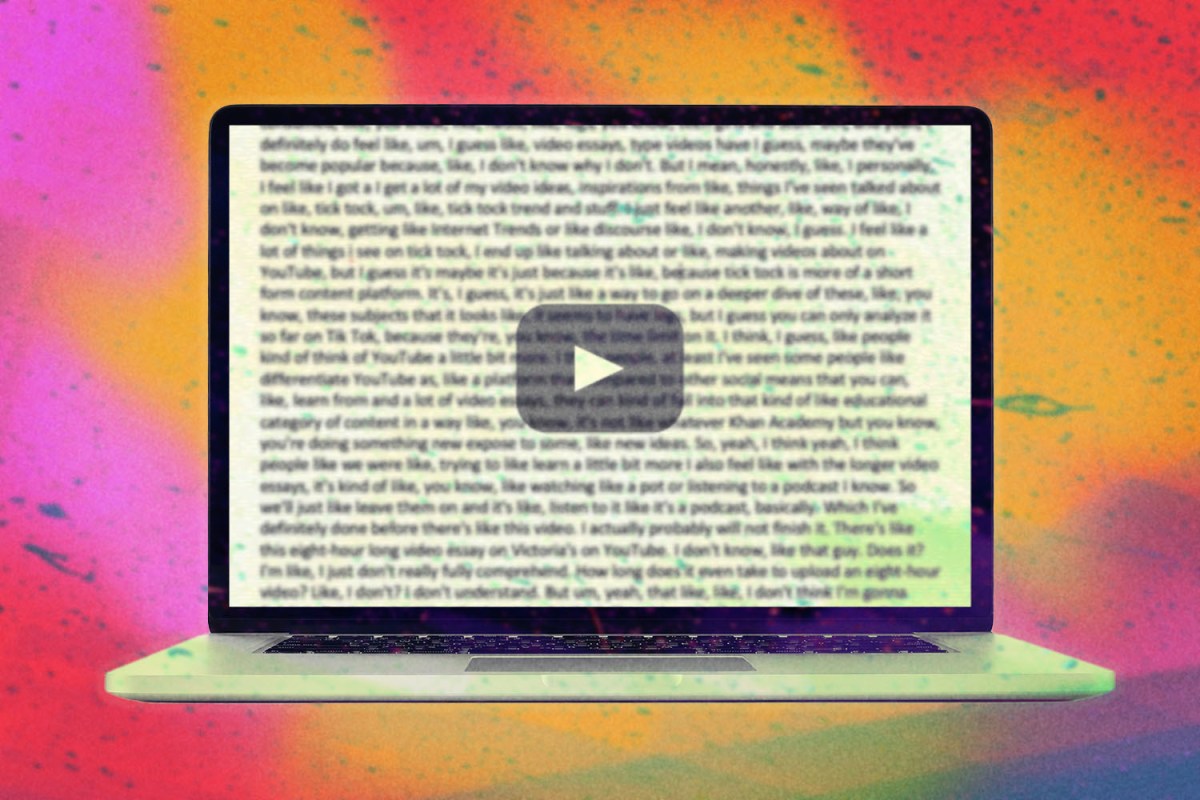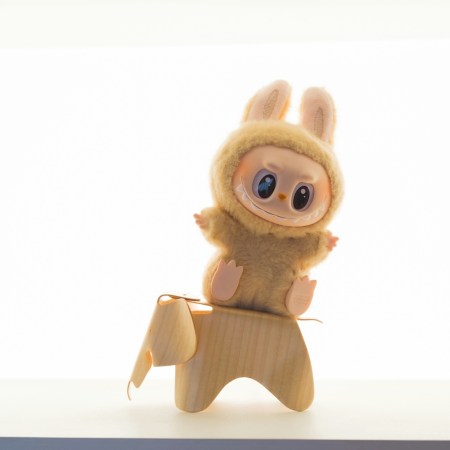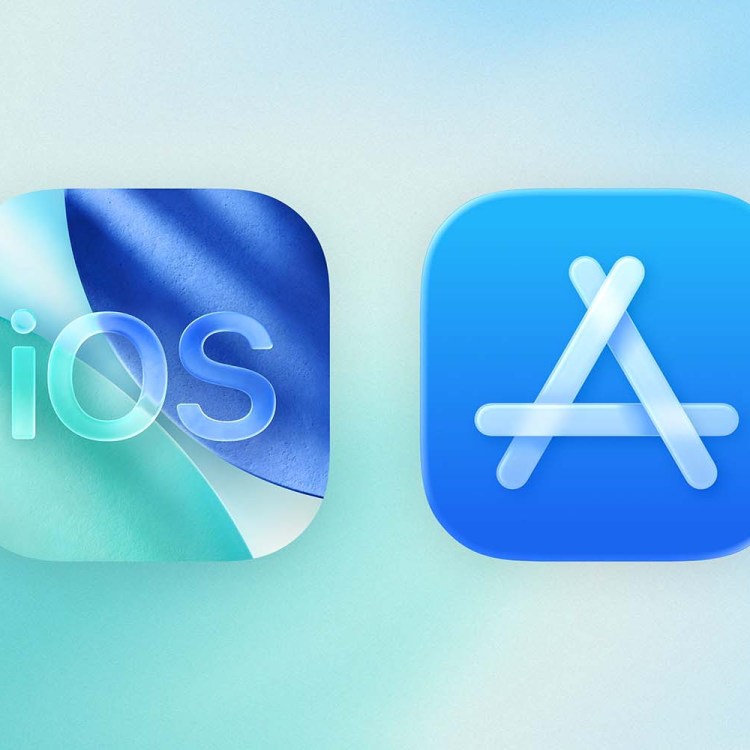Would you spend eight hours watching a video about the failings of Victorious, the Nickelodeon show that featured a young Ariana Grande from 2010 to 2013? What about nearly 14 hours total about the series as a whole?
Even if you wouldn’t, over five million people have. Another 3.6 million have spent an hour and 15 minutes watching a video on My Little Pony’s Brony subculture. Over six million have tuned in to watch a two–part series totaling almost five hours on the TV show Pretty Little Liars.
Since YouTube launched as a platform in 2005, countless video trends have been birthed and subsequently died on it: daily vlogs, challenge videos, the era of collaborations with every British YouTuber imaginable. “I started my first YouTube channel in like, 2012,” video essayist and NYU student Amanda Gordon of the channel amandamaryanna explains. “I found these lifestyle, beauty guru creators, and I really liked that content, so I was like, ‘Oh, I’ll do that, too.’ So I was making things like Outfit of the Day videos and stuff like that.”
Short-form video content has been appealing to the masses since Vine debuted in 2013. TikTok now has over a billion users less than six years after it first launched in 2016, and it has inspired copycats like Instagram Reels and YouTube Shorts. However, longer-form content has been more in vogue on YouTube since the platform decided to prioritize watch time when applying ads to videos.
Of course, long-form content on the platform isn’t new: Shane Dawson, the now-disgraced King of YouTube, was releasing multi-part docuseries videos that were over an hour long back in 2019. Lindsay Ellis, who some creators credit as one of the first video essayists, was making long-form commentary videos in 2016. When the pandemic began in March 2020, the demand for content to consume skyrocketed. Streaming services saw an uptick in usage; subscriptions on streaming platforms passed a billion in 2020. It makes sense that the same would be asked of content creators on YouTube: give us more.
Maia, or Broey Deschanel on YouTube, says that she started seeing longer videos come up in her recommended tab during quarantine. She had already started making commentary videos in 2018 after watching creators like Lindsay Ellis, but she says that “around 2020 was when I feel like the video essay community started kind of proliferating, that long-form essays became more of a thing.” Gordon began making longer-form videos after she started remote learning in 2020. “I got into more scripted content, because I couldn’t really do college vlogs anymore, and everything was shut down,” she says.
The appeal of longer videos to creators is simple: you have time to actually flesh out an argument. “You can give background to what you’re talking about,” Maia explains. “In shorter form, you have to get right to the point. With a longer format, like you’re able to kind of contextualize things, give counter-arguments, whatever.” Incorporating film clips and outside footage is common in video essays, especially ones about media, she adds: “You can kind of play with the medium and the format. I think longer form kind of allows for that.”
For the viewer, longer-form content can provide some welcome background noise during mundane activities like cleaning your room or doing schoolwork. Hailey Elizabeth, who on her eponymously named channel covers mainly conspiracy and true crime content, says that like podcasts, longer videos are “easy to digest, and it’s a lot easier to listen to as background noise, rather than a TV show or a movie where you have to stay engaged the whole time.”
In an interview with Vox, Madeline Buxton, the cultural and trends manager at YouTube, said that “Video essays are a form that has lent itself particularly well to pop culture because of its analytical nature…We are starting to see more creators using video essays to comment on growing trends across social media. They’re serving as sort of real-time internet historians by helping viewers understand not just what is a trend, but the larger cultural context of something.”
Gordon also thinks of YouTube as a platform that can be more educational to viewers than others. “It’s not like Khan Academy,” she says, laughing. “But you know, you can find something new, or you’re exposed to new ideas.” She also credits TikTok as being a place of cross-social media inspiration: “YouTube is a way to go on a deeper dive of subjects you might come across on TikTok that you can only analyze so far on TikTok because it has shorter time limits.”
Elizabeth also believes that through her channel, she’s opening doors for her future career. “I was going to college for filmmaking, so we would always have to upload our short films to YouTube,” she explains. “It’s a really good stepping stone: if you want to create a podcast or a TV show or you want to get further into the film industry, YouTube is a perfect way to get there.” Maia agrees and calls YouTube the “future of film criticism.”
The greater cultural shift regarding YouTube has been related to how the mainstream media has discussed it. What was once a cultural joke — the idea that a bunch of kids were making videos thinking they would make them rich — or a moral panic over kids wanting to be influencers when they grow up has begun to shift to mainstream recognition of content creation as a “real job.” “A couple of years ago, being a ‘creator’ or an ‘influencer’ was kind of a bad word,” Elizabeth explains. “A lot of people didn’t really like that label. Now, people aspire to be that. I think that’s really cool. You get to be your own boss. You get to creatively express yourself how you want to. I feel like it’s a really good thing.”
The largest misconception about being a YouTuber, all three agree, is the idea that it’s fast and easy money. It’s neither. Videos can take days to properly research and edit, and all said to not expect to make money the second you start uploading videos. Then there are the problems with the platform itself.
YouTube’s copyright policy has been the bane of many creators on the app and has penalized video essay creators, who often use external video clips and materials in creating their videos. “The reason that things get copyrighted, even if they’re fair use, is because the corporations have realized that this is a great money-making opportunity,” Maia explains. “YouTube has allowed them to do that, so they’re kind of copyrighting everything left, right and center.” She notes that video essays are “the hardest videos to get monetized” due to their reliance on outside clips and says that “almost every” copyright claim she’s received has been an unfair one.
“I just need YouTube to lay off a bit,” she says with a laugh. “If a video obviously isn’t trying to plagiarize a work, it’s pretty clear.”
It’s too early to say whether video essays will stick on YouTube the way other video trends have, and while some creators have embraced hours-long videos, some creators still aren’t ready to follow suit. “My average video is probably like, 45 minutes to an hour,” Elizabeth explains. “That’s a really comfortable length for me; I get all of what I need to say out there. This duration is perfect for me.”
“I don’t even know what I would talk about for eight hours,” Gordon says of the Victorious deep dive. “I did start watching it, and I was like, ‘I honestly can’t believe I’m watching this.’ It’s insane to me.”
How long did she make it through? “At least half of the five-hour one,” she says. “Don’t know if I’ll finish it though.”
This article appeared in an InsideHook newsletter. Sign up for free to get more on travel, wellness, style, drinking, and culture.
























